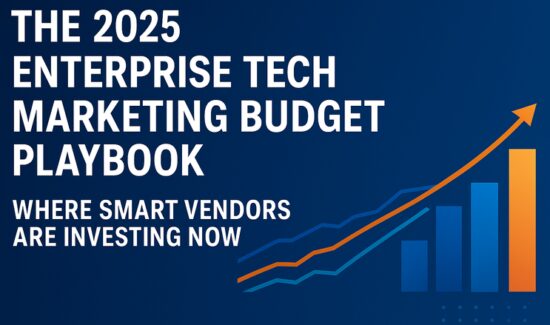5 Innovative Marketing Campaign Ideas Using Customer Behavior Data

As part of Solutions Review’s Contributed Content Series—a collection of contributed articles written by our enterprise tech thought leader community—Charm Bianchini, the Sr. Director of Global Demand Generation at Near, shares a few ways companies can use customer behavior data to improve their marketing campaigns.
 As costs increase and a recession looms, it is more critical than ever for marketers to build personalized relationships with customers from acquisition to expansion. One effective strategy for developing a more personalized customer journey is to leverage customer behavior data. This data consists of mobile location data that provides insights into customer profiles, visitation patterns, and location and movement trends, among other things.
As costs increase and a recession looms, it is more critical than ever for marketers to build personalized relationships with customers from acquisition to expansion. One effective strategy for developing a more personalized customer journey is to leverage customer behavior data. This data consists of mobile location data that provides insights into customer profiles, visitation patterns, and location and movement trends, among other things.
By combining this data with first-party data, companies can gain a deeper understanding of their customers, as well as potential prospects and industry trends. This knowledge can be used to create sophisticated, personalized marketing campaigns that attract and retain customers while also demonstrating clear ROI.
Acquire Profitable Customers with Customer Behavior Data
Personalization is key to successful B2B acquisition campaigns. However, targeting audiences through broad search terms or single demographic characteristics, such as age or income level, may not be enough to make marketing campaigns effective. By leveraging customer behavior data, marketers can access bespoke audiences that resemble real people with a combination of demographic characteristics. This includes age and income level, but also day-to-day qualities such as dining and entertainment habits, preferred transportation, and other lifestyle behaviors.
With these details, marketers can create rich customer profiles and personas that align with business objectives. Customer scoring can also determine the profitability of each profile, ensuring that marketing resources are allocated towards the most valuable companies. By adopting this approach, marketing ROI is optimized by attracting only the most profitable customers.
One example: Elkhart County, Indiana, wanted to drive awareness around Elkhart as a cost-effective option for hotels and restaurants for out-of-town visitors going to Notre Dame football games. Elkhart is one of the key restaurant and hotel options for the 65 million vehicles per year that travel the I-80/90 Indiana Toll Road. Just 20 minutes from the University of Notre Dame exit, Elkhart offers 1,800 hotel rooms with competitive nightly rates and no minimum stay, as well as over 15 restaurants within 60 seconds of the exit. Empowered with new insights, Elkhart County, Indiana Convention & Visitors Bureau (CVB) performed one of their first experiments in this type of advertising.
The team identified 3 Notre Dame home football games against Cincinnati, Toledo, and Chapel Hill, with a goal to target sports fans in those markets who might be interested in coming to Notre Dame for the game. In the weeks leading up to football games, sports app fans from Cincinnati, Chapel Hill, and Toledo were targeted with ads that directed them to the “Exit92” website, which offered discounts on hotels in Elkhart. On game day, visitors to Notre Dame stadium were also directed to the same site for deals on nearby restaurants as well as more deals in the Elkhart area.
In addition to analyzing impressions and clicks, Near was able to observe actual visitation patterns, a level of monitoring and measurement not offered by the other digital advertising partners the Elkhart County, Indiana, CVB team worked with. Initially, Elkhart County, Indiana CVB said they’d be happy if they garnered even 10 new visitors that they could attribute to the new campaigns. The results? 1.2 million impressions, 5.7K clicks (.5 percent CTR) to the Elkhart landing page at Exit92.org promoting deals, 3,624 visitors who came to Elkhart Country and/or the Notre Dame Stadium after seeing the ad, with 280 of those visitors visiting hotels within 60 seconds of Exit 92.
Improve Customer Experience and Personalization
Establishing a strong customer relationship is only the beginning. To grow and expand the relationship, customer behavior data can provide deeper insights into customers, answering questions such as their demographic attributes, interests, and brand affinities, as well as how often they visit competitors. Armed with this knowledge, marketers can strengthen customer relationships by delivering personalized messaging, offering incentives for repeat purchases, and developing new products and services tailored to customer interests.
By updating customer scoring with this additional information, marketers can also upgrade low-potential customers to high-potential ones by appealing to their interests and preferences. Overall, leveraging customer behavior data can help businesses enhance customer loyalty and expand key relationships, leading to greater success and profitability.
Win Back Lost Customers
Losing customers is inevitable for any business, but leveraging customer behavior data can help companies win them back. To effectively launch win-back campaigns, marketers need to answer critical questions beyond first-party data, such as where lost customers have been going, if they’ve been visiting competitors, or if there are other reasons why they stopped engaging with your organization.
Customer behavior data can provide these answers, helping companies identify why customers didn’t return, whether the organization played a role, and how to win them back. With this data intelligence, marketers can target lost customers with the highest potential for return, using messaging that will resonate most effectively. Just as targeted acquisition campaigns are more likely to succeed, targeted and personalized win-back campaigns can significantly improve the chances of regaining lost customers.
Use Multi-Touch Campaigns Across Channels to Increase Conversions
For marketers, choosing the right channel is just as important as developing the right message when targeting an audience. It’s crucial to identify the most effective channels whether focusing on digital or non-digital approaches. Social media, search, direct mail, and out-of-home (OOH) advertising all have their place, depending on the audience.
By leveraging the right data, marketers can determine the most appropriate channels for their audience and create personalized, multi-touch campaigns that utilize various channels, including OOH and digital touchpoints. Customer behavior data can help combine these channels in innovative ways, such as retargeting people who passed by a billboard or store location with digital ads and tracking their actual conversion to in-store foot traffic. Marketers can also determine the number of touches required to convert an average prospect into a customer.
Target Your Competitors’ Customers
Understanding the competition is key to staying ahead in business. However, relying solely on first-party data can make it challenging to accurately assess how the company stacks up against its competitors. This is where customer behavior data comes in, providing insights like how many visitors your competitors receive, how far those visitors travel, how much time they spend in your competitors’ stores and what are their demographics and other characteristics.
Customer behavior data provides the additional granularity to better understand your customers and the customers visiting your competitor across the street, literally or figuratively. These details reveal how much your customers’ demographics overlap, whether your company actually has a better location, and who else on the block, you could target to bring into your business. As you understand your competitor’s customers better, you can also target them with personalized ads that resonate with their affinities, whether they’re pet owners, parents, or fashionistas.
For businesses looking to stay ahead of the curve, incorporating customer behavior data into their marketing strategy is a must. With massive shifts in customer behavior and tremendous opportunities for innovative businesses, data intelligence about people, where they go, and what they want has never been more important.
Marketing is no longer about simply reaching as wide an audience as possible but about targeting the right prospects most interested in the products and services you have to offer. Customer behavior data gives marketers the advantage to personalize the customer journey—who your company can reach, which channels it uses, how frequently, and how to entice people to choose your products and services.






















